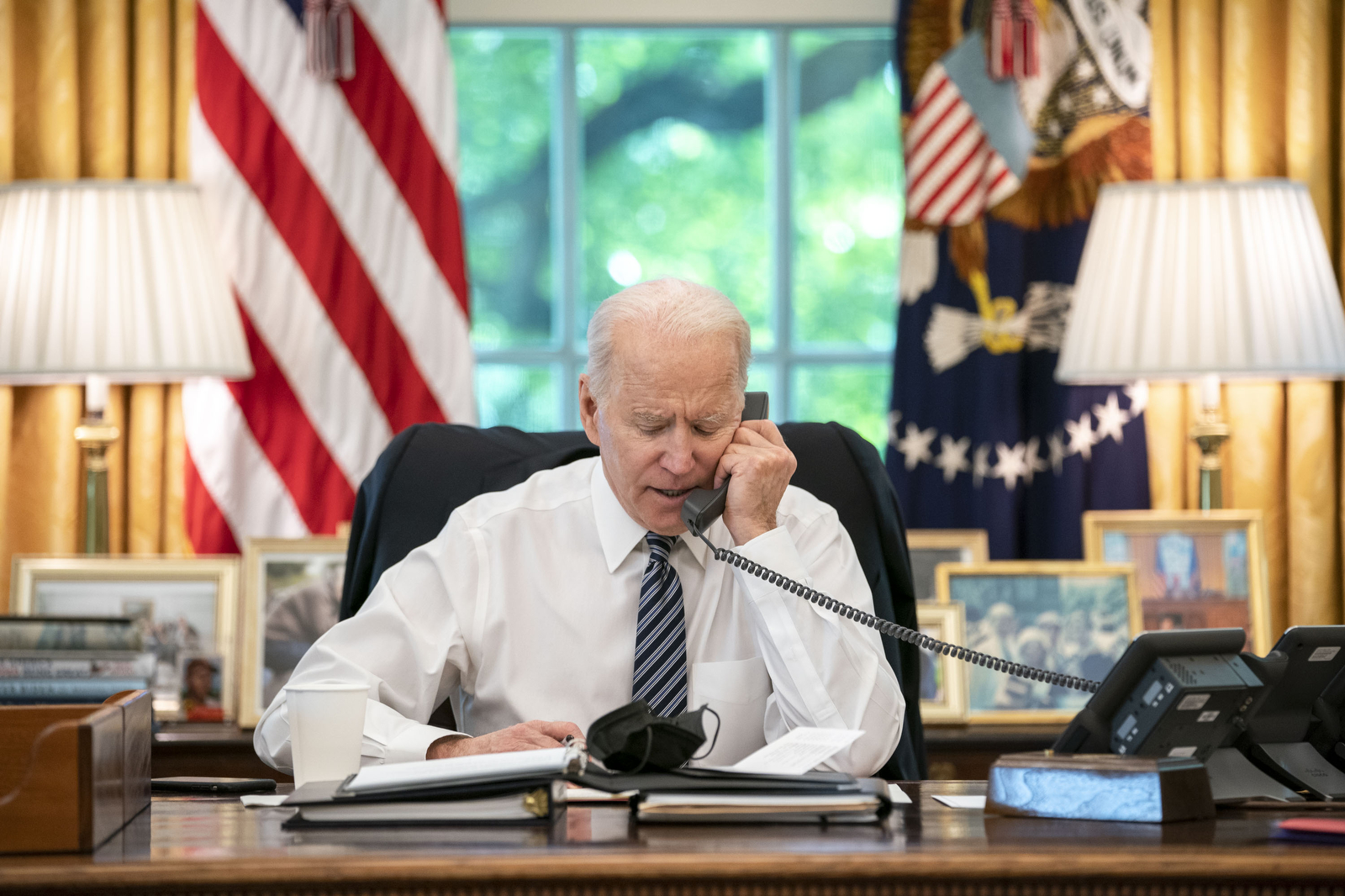A nation must think before it acts.
Aaron Stein has done a real service in his June 15 piece, Assessing the Biden Administration’s Interim Syria Policy. Syria policy for the last two administrations was at center stage. In many ways, it was also the bane of their existence, with President Donald Trump’s two maladroit withdrawal decisions—albeit rescinded—and President Barack Obama’s blowing the chemical weapons (CW) redline in 2013. But since January, Syria policy has gone dark. Dr. Stein’s summary of what that policy appears to be however rings true, given the snippets we have gotten from Biden administration staffers. Alas, were it not so. He describes a de minimis policy, focused on but two of the many Syria issues: humanitarian assistance and the final defeat of the Islamic State. This raises more questions than answers, and sets up the administration, and overall Middle East policy, intrinsically tied to Syria, for a fall.
The problems begin with a misinterpretation of the Trump administration’s Syria policy, as implicitly to overthrow Bashar al-Assad and obsessed with Syria’s oil. The first is a red herring; the Obama administration early abandoned overthrowing Assad, and it was never part of the Trump-era Syria policy, as the President stated in a letter to Congress in March 2019. Trump’s bizarre “defend the oil” policy was simply an excuse to reverse his bad troop withdrawal decision with no practical effect on the ground.
Rather, Syria policy, under Secretaries of State Mike Pompeo and John Kerry, sought a comprehensive solution to the whole array of Syrian problems. Those included, of course, defeating ISIS and responding to the humanitarian disaster, but also focused on the long-term future of the Syrian Democratic Forces (SDF), America’s Kurdish-led anti-ISIS partner in northeast Syria. The focus also included Iran’s geostrategic move to cement an eventual Lebanon-like state in Syria along with its missiles, which now have pulled Israel into the conflict. The previous two administrations also considered Turkey’s various equities manifest in a major military presence in much of Syria’s north and the various accountability problems with Assad from war crimes to CW. These problems are not going away whether the Biden administration wishes so or not.
Most importantly, the Obama and Trump administrations, based on the United Nations Security Council’s 2015 Resolution 2254, worked not only on specific responses to all the above issues, but also pressed for a comprehensive political compromise in the Syrian civil war beginning with a ceasefire and reconciliation between the Syrian government and its rebellious population. To that end, those administrations built a broad international alliance which exerted diplomatic, economic, and eventually military pressure on Syria, Russia, and Iran; sanctioned Assad’s butchers; and blocked reconstruction assistance while Washington worked with Russia for a possible compromise solution.
Stein suggests the Biden administration is not currently interested in such a comprehensive approach, and in fact, as he noted, it has halted the diplomatic channel with Moscow. The folly of this approach is evident even in its two signature policies: fighting ISIS and humanitarian relief. Current ISIS strategy focused on U.S. troops and the SDF in northeast Syria will keep ISIS under control there, but does nothing against ISIS elements running amok in the 70% of Syria that Assad controls, largely because Assad’s policies will always drive a significant portion of his population to oppose him, including by putting up with anti-Assad extremist groups. Likewise, any real solution to the humanitarian crisis goes beyond keeping assistance corridors across borders open and generous donations from Washington. The underlying need is for political changes that will reassure the 12 million Syrians, half the population, who have fled their homes, that they are safe to live again under the Syrian government’s rule.
Most importantly, current policy seems indifferent to the Iranian and Russian efforts to not only dominate Syria, but also to translate a victory there into a reconfiguration of regional security that further entrenches autocrats, deepens sectarian tensions, and undermines U.S. interests. These interests, contrary to those arguing that they distract from the Asia pivot, require few troops and limited funds beyond humanitarian. Rather, they can be advanced by diplomatic leadership and mobilization of partners’ and allies’ military, diplomatic, and economic capabilities. If the administration feels Syria isn’t worth even such a limited commitment, given the regional priority, as Stein notes, to return to the Iranian nuclear deal, so be it. But the administration does not really control events. When they explode, as with Gaza and Taliban advances over the last few months, the administration suddenly finds itself consumed working ceasefires in the first case and stripping the Asian pivot of its only aircraft carrier in the second. Syria is capable, now as much as previously, of generating such urgent crises if not carefully managed.
The views expressed in this article are those of the author alone and do not necessarily reflect the position of the Foreign Policy Research Institute, a non-partisan organization that seeks to publish well-argued, policy-oriented articles on American foreign policy and national security priorities.




